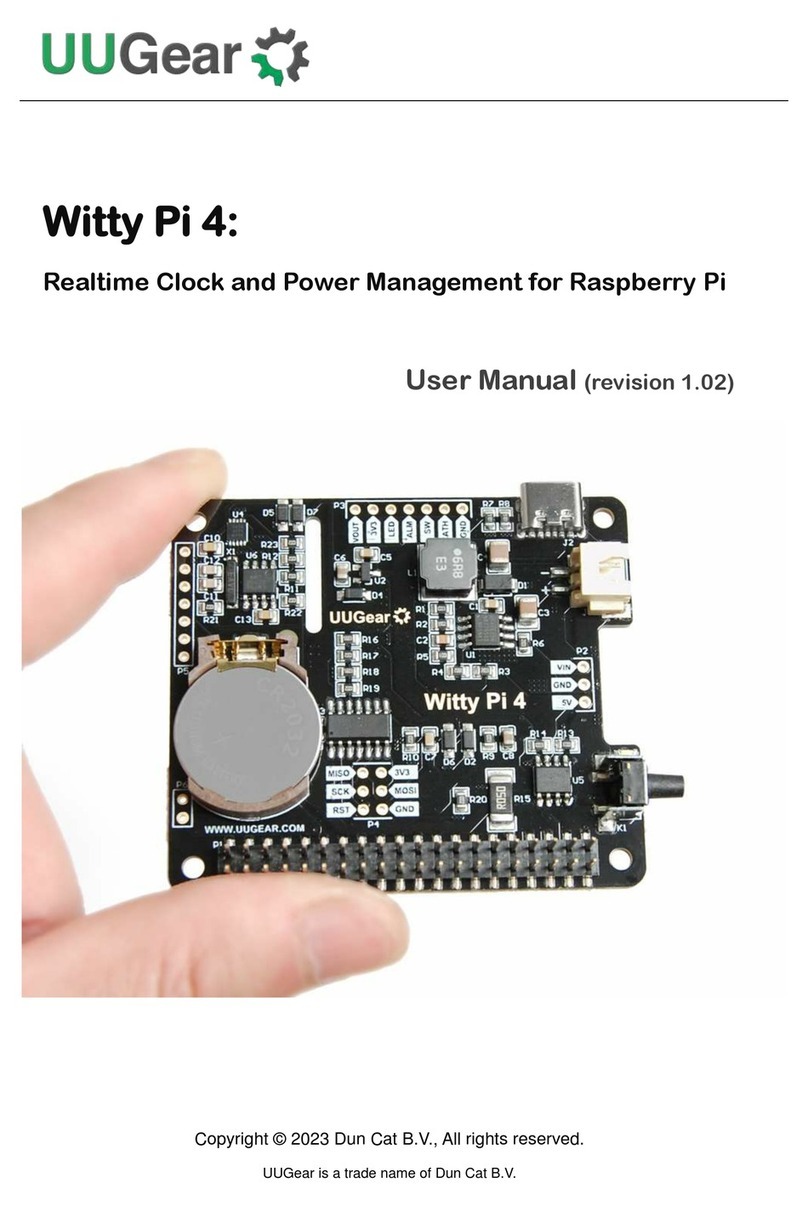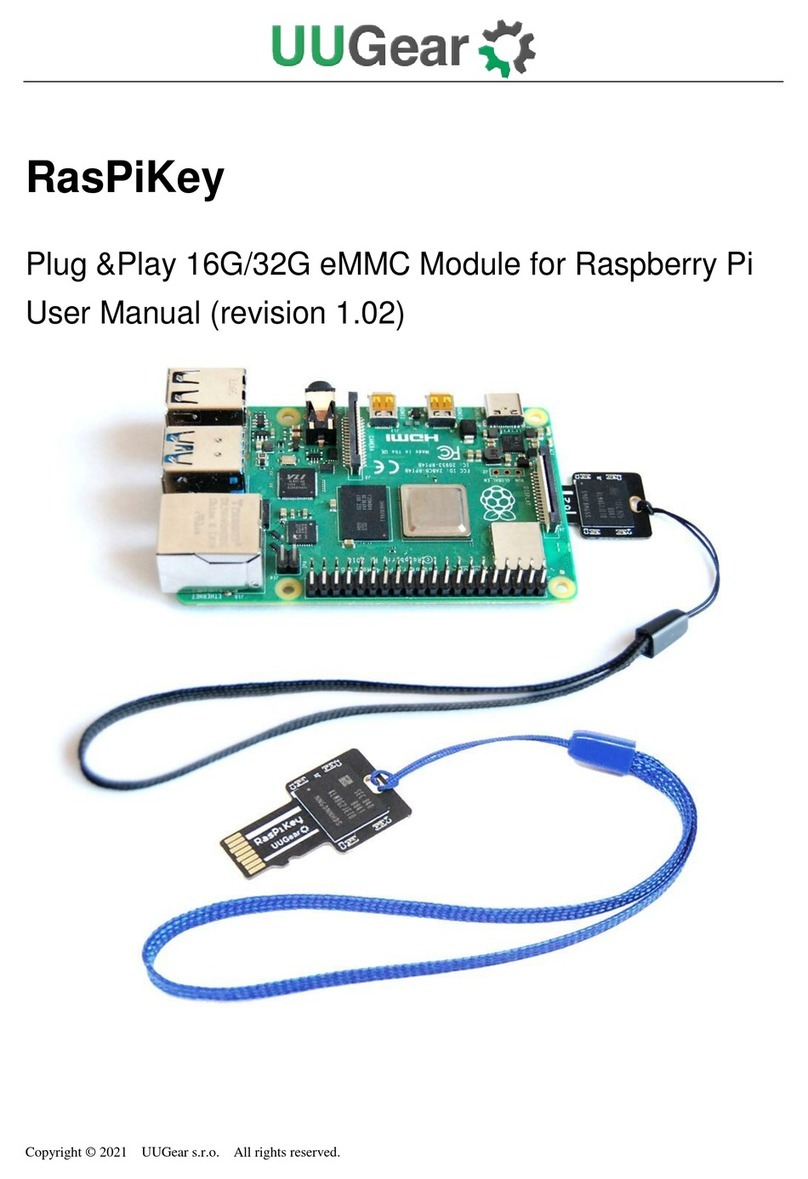Copyright © 2022 Dun Cat B.V., All rights reserved.
UUGear is a trade name of Dun Cat B.V.
7.9 Set over temperature action ....................................................................................14
7.10 Set below temperature action..................................................................................14
7.11 View/change other settings......................................................................................14
7.12 Reset Data…............................................................................................................16
7.13 Exit ...........................................................................................................................16
8. Using UWI (UUGear Web Interface) ...................................................................................17
9. About Schedule Script .........................................................................................................18
9.1 How does Schedule Script Work? ...........................................................................18
9.2 Make Your Own Schedule Script .............................................................................20
9.3 Using Schedule Script Generator ............................................................................22
9.4 Advanced Usage of Schedule Script .......................................................................23
10. Know More about the Realtime Clock .............................................................................24
10.1 No Off-Power Time Keeping ....................................................................................24
10.2 Alarms and Alarm Output.........................................................................................24
10.3 Temperature Compensation ....................................................................................24
11. Additional Interfaces ........................................................................................................26
11.1 The 3 Pads for Power Connection (P2 on the back)...............................................26
11.2 The Unpopulated 7-Pin Header on the Top (P3).....................................................26
11.3 The Unpopulated 2 x 3 Pin Headers (P4) ...............................................................28
11.4 The Unpopulated 7-Pin Header in the Middle (P5) .................................................29
12. Integrate with Other Programs ........................................................................................30
13. Witty Pi Log Files .............................................................................................................32
14. Frequently Asked Questions (FAQ) .................................................................................33
14.1 What I2C address is used by Witty Pi 4 L3V7? Can I change it? ...........................33
14.2 What I2C Registers are provided by Witty Pi 4 L3V7? ............................................34
14.3 What GPIO Pins Are Used by Witty Pi4 L3V7?.......................................................41
14.4 Is Witty Pi 4 L3V7 Compatible with “Other Hardware”? ..........................................42





























